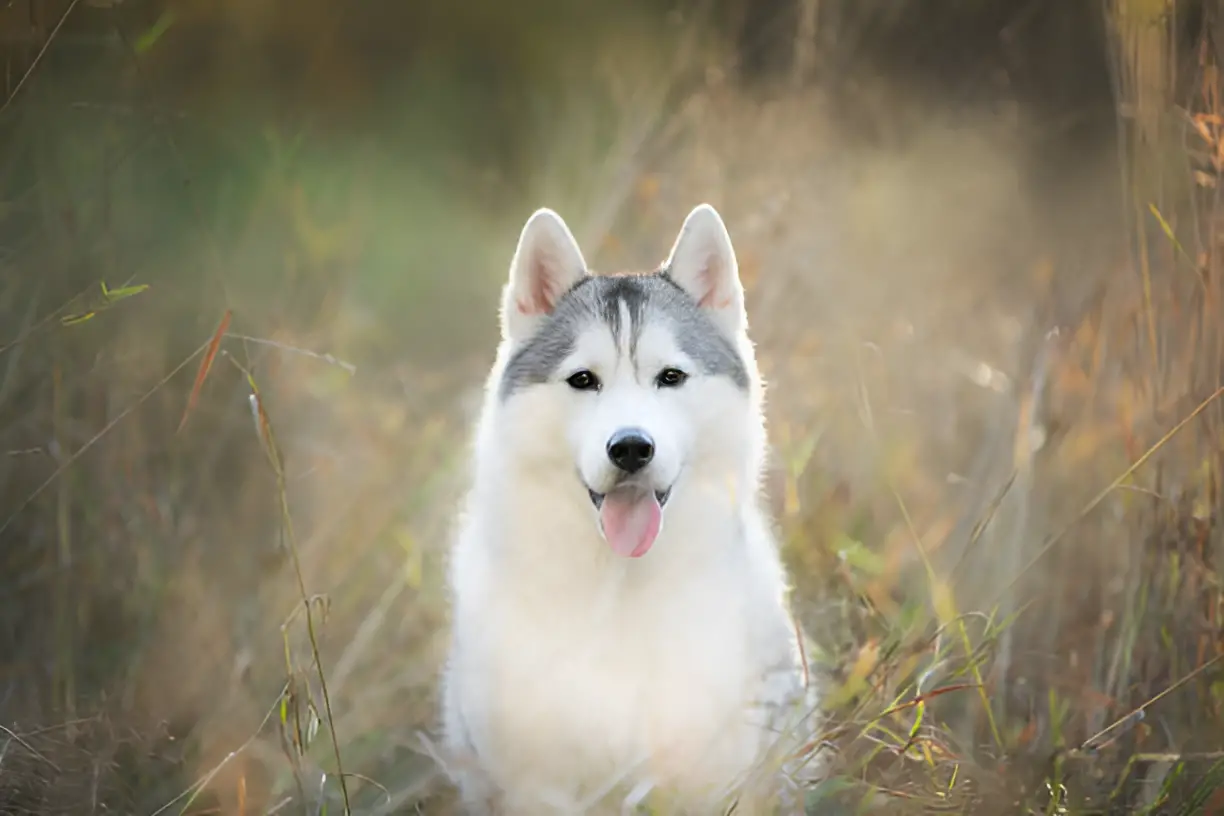The rarest color of Siberian Husky is the pure white Husky, characterized by its striking all-white coat and often blue eyes. Siberian Huskies are known for their stunning appearance and diverse range of coat colors and patterns. Among these, the pure white Husky stands out as the rarest and most sought-after. This comprehensive guide will explore the genetics behind Husky coat colors, the characteristics of the rarest colors, and the care considerations for these beautiful dogs.
Understanding Husky Coat Colors
The coat color of a Siberian Husky is determined by a combination of genetics and environmental factors. Here are some key points about Husky coat colors:
1. Genetic Influence: The color of a Husky’s coat is influenced by multiple genes that control pigmentation. These genes can produce a wide range of colors and patterns.
2. Common Colors: Common Husky colors include black and white, gray and white, red and white, and sable and white. These colors are recognized by the American Kennel Club (AKC).
3. Rare Colors: Rare Husky colors include pure white, agouti, and certain shades of gray and red. These colors are less common and often more desirable among Husky enthusiasts.
The Pure White Husky
The pure white Husky is considered the rarest color of Siberian Husky. Here are some characteristics that make this color unique:
- All-White Coat: The pure white Husky has an entirely white coat with no other colors or markings. This striking appearance is the result of a recessive gene that suppresses pigmentation.
- Blue Eyes: Many pure white Huskies have blue eyes, which adds to their striking appearance. However, they can also have brown or heterochromatic eyes (one blue and one brown).
- Black Points: Pure white Huskies typically have black points, meaning their nose, eye rims, and paw pads are black. This contrast enhances their overall appearance.
Other Rare Husky Colors
In addition to the pure white Husky, there are several other rare colors that are highly prized among Husky enthusiasts:
1. Agouti: Agouti Huskies have a wild, wolf-like appearance with banded hairs that give a mottled look. This color is often referred to as “wild coloring” and is quite rare.
2. Silver Gray: Silver gray Huskies have a light gray coat with a silvery sheen. This color is the result of a dilution gene that lightens the base color.
3. Red and White: Red and white Huskies have a rich, reddish-brown coat with white markings. This color is caused by a pair of homozygous recessive genes.
4. Sable: Sable Huskies have a reddish-brown coat with black-tipped hairs. This color can vary in intensity and often changes as the dog ages.
Genetics Behind Husky Coat Colors
The genetics of Husky coat colors are complex and involve multiple genes that interact to produce different colors and patterns. Here are some key genetic factors:
- Agouti Gene: The agouti gene controls the distribution of pigment in the hair shaft, resulting in banded hairs that give a mottled appearance.
- Dilution Gene: The dilution gene lightens the base color of the coat, resulting in colors like silver gray and blue.
- Recessive Genes: Certain colors, such as pure white and red, are the result of recessive genes. A dog must inherit two copies of the recessive gene (one from each parent) to express these colors.
Care Considerations for Rare Husky Colors
While the color of a Husky’s coat does not affect their overall health, there are some care considerations to keep in mind for rare-colored Huskies:
1. Sun Protection: Pure white Huskies and those with light-colored coats may be more susceptible to sunburn. Provide shade and consider using pet-safe sunscreen on exposed areas.
2. Regular Grooming: Huskies have a double coat that requires regular grooming to prevent matting and reduce shedding. Brush your Husky’s coat at least once a week and more frequently during shedding seasons.
3. Health Monitoring: Regular veterinary check-ups are essential to monitor your Husky’s health and address any potential issues early on. This is especially important for rare-colored Huskies, as some genetic factors can be linked to health conditions.
Conclusion
In conclusion, the rarest color of Siberian Husky is the pure white Husky, characterized by its striking all-white coat and often blue eyes. Other rare colors include agouti, silver gray, red and white, and sable. Understanding the genetics behind these colors and providing proper care can help ensure that your rare-colored Husky remains healthy and beautiful. By appreciating the diversity and uniqueness of Husky coat colors, we can better care for these stunning dogs.
The photo featured below the post headline is Credit: Anastasiia Cherniavskaia/istockphoto
I hope you find this post helpful and informative. If Yes’ feel free to share it with your friends!
Frequently Asked Questions
What is the rarest color of Siberian Husky?
The rarest color of Siberian Husky is the pure white Husky, characterized by its all-white coat and often blue eyes.
What are some other rare Husky colors?
Other rare Husky colors include agouti, silver gray, red and white, and sable.
What causes the pure white color in Huskies?
The pure white color in Huskies is caused by a recessive gene that suppresses pigmentation.
How should I care for a rare-colored Husky?
Provide sun protection, regular grooming, and regular veterinary check-ups to ensure the health and well-being of your rare-colored Husky.
Are rare-colored Huskies more prone to health issues?
While coat color itself does not affect health, some genetic factors linked to rare colors can be associated with certain health conditions. Regular veterinary care is essential.

